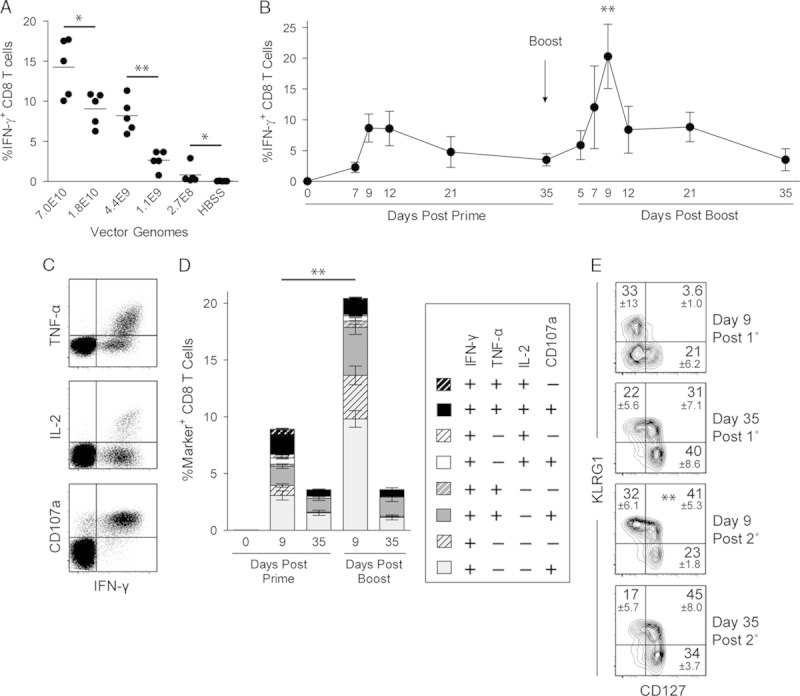FIGURE 3.

ID-VP02 induces high-quality multifunctional primary CD8 T-cell responses that can be effectively expanded with a homologous boost. A, C57BL/6 mice were immunized with indicated doses (vector genomes) of ID-VP02 encoding full-length OVA or HBSS vehicle alone. At day 12 postimmunization, the percentage of OVA257-specific splenic CD8 T cells was measured by intracellular cytokine staining (ICS). B, The kinetics of the primary and secondary CD8 T-cell response to ID-VP02 encoding OVA was determined by immunizing mice (5 per group) with 1×1010 vector genomes of ID-VP02 in a prime-boost regimen with a 35-day interval and analyzing splenic CD8 T-cell responses at the indicated timepoints. Immunizations were staggered such that all groups were analyzed by ICS on the same day. Peak of the secondary response was significantly greater than the peak of primary response (**P≤0.01, Mann-Whitney). C, Representative intracellular IFN-γ, TNF-α, and IL-2, and surface CD107a staining on viable CD8 T cells after peptide restimulation. D, Frequency of CD8 T cells expressing combinations of IFN-γ, TNF-α, IL-2, and CD107a around the peak and postcontraction of the primary and secondary responses. Negligible numbers of CD8 T cells that were IFN-γ− expressed any other effector molecule. E, The effector/memory phenotype of CD44hi H-2Kb-OVA257 pentamer+ CD8 T cells was assessed by staining with CD127 and KLRG1 at the indicated timepoints. **Frequency of CD127+ KLRG1+ cells were significantly greater on day 9 post 2° than on day 9 post 1°. Gate values are mean±SD. *P≤0.05 and **P≤0.01 between indicated groups (Mann-Whitney).
